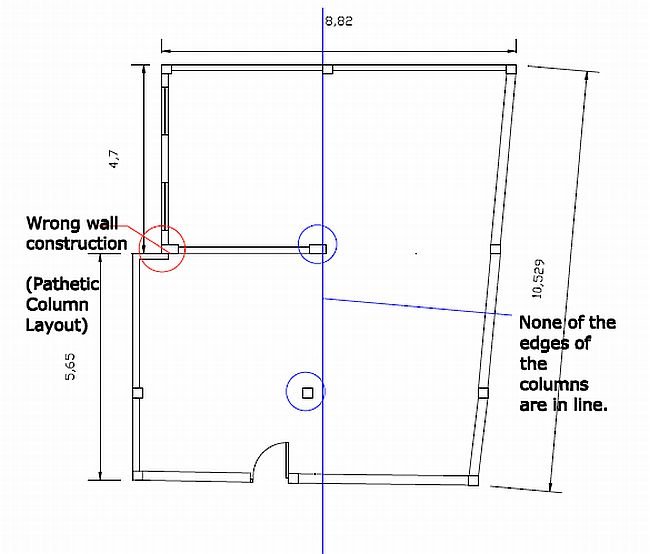A lesson for all the Civil Engineers and Designers to learn
I got a project of designing (Architectural Design) a Hostel in Lucknow, India. The Structural design that is, column positions and wall construction was already done. The client wanted me to design a Hostel keeping the column positions and exterior wall construction intact. I have written this article to address all the Civil engineering students as well as Civil Engineers to avoid making such blunders while they design. Please do read this article because understanding the intensity of the job of a Civil Engineer is must for every student and professional. I guess this realization has been washed away and forgotten in the wave of commercialism.
Hostel Design, Lucknow, India
The client mailed me the layout of the existing construction. After I studied the layout, I figured out that the Column layout was pathetic. I wonder what kind of Civil Engineer must have made the layout or if at all any Civil Engineer has done it.
Errors in Construction
Wrong size of the Columns
The size of the columns was 9”x9” and the building is supposed to be constructed upto G+2 floors which is really disastrous for the structure.
It could lead to structural failure and ultimately structural collapse.
(The duty of the Civil Engineer is to understand and not make such dramatic blunders. The consequences of this kind of structural design could be disastrous.)

9”x9” size columns are only preferred if you were to construct only a ground floor structure using M15 grade concrete. If you are to construct another floor that is (G+1), the minimum size of the column should not be less than 9”x12” using M15 grade concrete.
If the client insists on using smaller columns (9”x9”); in that case, use of M20 grade concrete should be done mandatorily and the construction should not be initiated before the client agrees to do so.